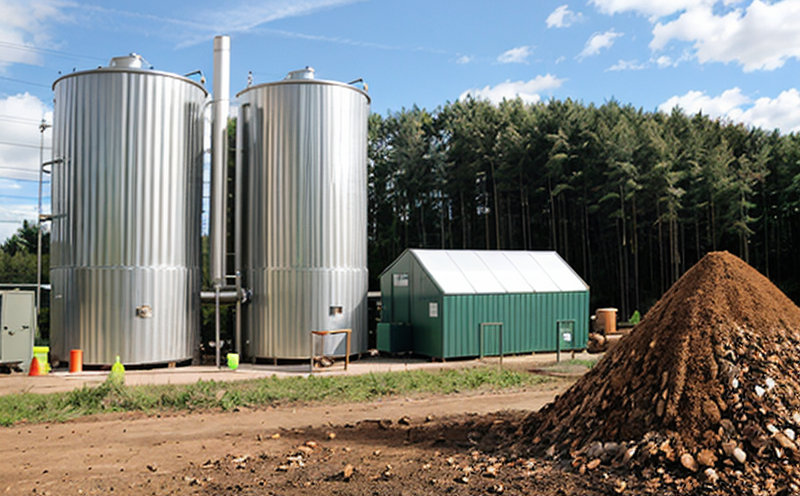ISO 18125 Calorific Value of Refuse-Derived Fuels
The ISO 18125 standard is a critical tool in the waste management and recycling sector, particularly for those involved in the conversion of refuse-derived fuels (RDF) to energy. RDF is produced by sorting municipal solid waste streams and processing them into a fuel-like material suitable for combustion in power plants or other industrial facilities. The calorific value of RDF plays a pivotal role in determining its efficiency as an alternative fuel source.
The process of measuring the calorific value involves several steps, including sample preparation, conditioning, and calorimetric analysis. Sample preparation is crucial to ensure that the test results are representative of the actual fuel characteristics. This includes drying the RDF samples to a consistent moisture content, which can vary depending on the waste source.
Once prepared, the samples undergo conditioning to standardize their condition for testing. This step ensures uniformity across multiple samples and batches, minimizing variability in test results. The calorimetric analysis is conducted using an adiabatic calorimeter, where the sample is ignited under controlled conditions, and the heat released is measured.
The results of this measurement provide a quantitative assessment of the RDF's energy content, which can then be used to predict its performance in various combustion systems. This information is vital for optimizing fuel blends, enhancing boiler efficiency, and ensuring compliance with regulatory standards. By accurately determining the calorific value, stakeholders can make informed decisions regarding the use of RDF as an alternative fuel source.
The application of this standard extends beyond mere compliance; it also supports research and development efforts aimed at improving waste management practices and promoting sustainable energy solutions. For instance, understanding the calorific value of different RDF compositions allows for the optimization of feedstock mixtures to achieve higher energy outputs.
In addition to its role in fuel performance prediction, knowledge of the calorific value is essential for environmental impact assessments. By quantifying the energy content, stakeholders can evaluate the overall sustainability of RDF-based energy production processes. This includes assessing greenhouse gas emissions reductions and lifecycle costs associated with RDF utilization.
Applied Standards
| Standard Number | Description |
|---|---|
| ISO 18125 | Determination of calorific value and higher heating value of refuse-derived fuels by adiabatic calorimetry. |
| ASTM D6713 | Determination of gross calorific value of coal or coke on an as-received basis, and net calorific value of coal or coke corrected to a reference moisture and ash-free basis by bomb calorimetry. |
The application of these standards ensures consistency and reliability in the measurement of RDF's calorific value. Compliance with ISO 18125 is particularly important for facilities that are involved in the production or procurement of RDF as fuel sources. By adhering to this standard, laboratories can provide accurate and repeatable results, which are essential for regulatory compliance and operational efficiency.
ASTM D6713 provides additional context on calorific value measurement, particularly for coal and coke, offering a comparative framework that can be useful in cross-sector analysis. This dual-standard approach enhances the robustness of testing protocols, ensuring that results are both sector-specific and internationally recognized.
Quality and Reliability Assurance
The measurement of calorific value is subject to stringent quality assurance measures to ensure reliability and accuracy. These measures include the use of calibrated equipment, regular calibration checks, and proficiency testing programs. The adiabatic calorimeter used in this process must be regularly verified against known standards to maintain precision.
Sample preparation plays a critical role in maintaining data integrity. Samples are carefully selected to represent the RDF composition accurately, ensuring that any variability is accounted for during analysis. This includes controlling factors such as moisture content and particle size distribution, which can significantly affect calorific value readings.
Data validation through replicate testing further enhances reliability. Multiple samples of RDF are tested in parallel, and results are compared to ensure consistency. Any discrepancies are investigated and resolved before final reports are issued. This approach not only ensures data accuracy but also builds trust with clients by demonstrating a commitment to precision.
Continuous improvement is achieved through regular training and certification of laboratory personnel. Staff undergo rigorous education and hands-on practice, ensuring they are up-to-date with the latest methodologies and best practices. This ongoing professional development helps maintain high standards of performance across all testing activities.
International Acceptance and Recognition
The ISO 18125 standard has gained widespread acceptance in numerous countries, making it an essential tool for international stakeholders involved in RDF production and utilization. Its adoption by organizations such as the European Union (EU) and various national standards bodies underscores its significance in promoting consistent practices across borders.
In the EU, compliance with ISO 18125 is often a prerequisite for certification programs that govern waste management and energy conversion processes. This ensures that facilities operating within these jurisdictions adhere to internationally recognized methodologies, enhancing their credibility and marketability.
The standard's recognition also extends to international trade agreements and partnerships. By aligning with ISO 18125, countries can facilitate smoother cross-border transactions, particularly in the context of RDF exports or imports. This harmonization reduces regulatory barriers and promotes a more unified approach to waste-to-energy conversion.
Moreover, adherence to this standard fosters collaboration among industry stakeholders, including researchers, engineers, and policymakers. It provides a common language and set of protocols that facilitate knowledge sharing and innovation across different sectors. This collaborative environment encourages the development of best practices and cutting-edge solutions in waste management and recycling.





